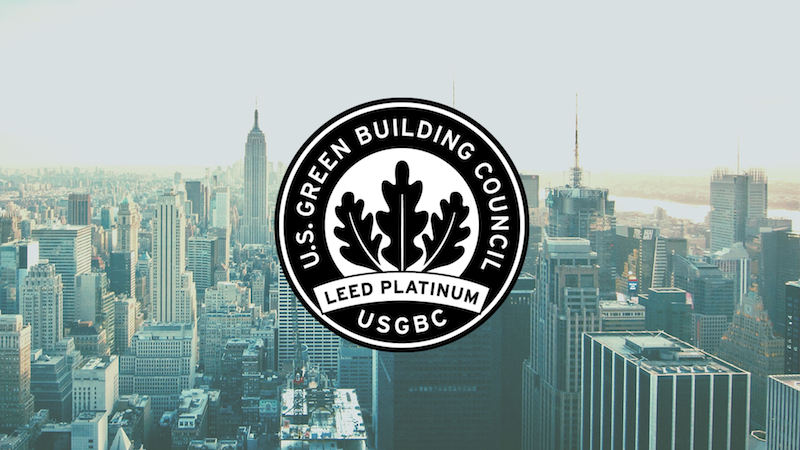The future is green. From the food we eat to the way we travel, the eco-revolution is permeating ever more aspects of our lives, and as our impact on the planet becomes increasingly destructive, there’s hope that genuinely sustainable technologies can make a real difference. Electric cars, organic foods, renewable energy, and recyclables; each is seen as an answer to some of the most significant problems facing society today, and each has received plenty of media coverage over the past decade.
However, one monolithic yet often overlooked aspect of our ecological footprint is literally all around us–the places we inhabit, the very bricks and mortar of our day to day existence. In offices and warehouses; museums, art galleries and stadiums; schools and hospitals; and of course, the places we call home. On a global scale, our buildings are responsible for a vast share of our energy, electricity, water and materials consumption. Cement, for example, is widely considered among the most destructive materials ever created, currently contributing more than 5% of global carbon dioxide emissions.
The Green Building Movement
In truth, ecological construction principles have been around since the very first mud huts built by man, however, as architecture has become significantly more complex, so too have materials and building methods. Although ultimately harmful, concrete is cheap, plentiful and easy to use, and our reliance on this material has hampered eco building innovations, with prohibitive costs and unproven technologies ensuring it has remained a niche industry.
Today, however, a nascent green building movement is gathering momentum, and new standards and regulations are being implemented to encourage architecture that is both better for the environment and healthier for living and working. These concepts encapsulate both construction principles and the life-cycle of the building itself, and the current, globally recognized standard is the Leadership in Energy & Environmental Design certificate–or simply, LEED. Here we take a look at the benefits of LEED certification and what it means for the future of green building.
Why LEED is Important
LEED is designed to measure and categorize all types of “healthy, highly efficient and cost-saving green buildings,” and provides certification based on a credit system that awards, Certified, Silver, Gold, and Platinum status after construction is complete. Credits are awarded based on a broad range of factors that cover both the construction phase and the energy efficiency of the building when inhabited. These factors encapsulate the types of materials used, the waste products generated, the types of energy sources used, and much more.
The importance of a framework such as LEED cannot be underestimated, and a standard on which to set “green building” is helping to break down the seemingly insurmountable number of destructive practices currently propping up the status quo. If we are to reduce the estimated 4% of global carbon emissions that are generated by US households alone, then LEED is crucial to identifying the many and varied factors which account for this. Additionally, LEED accredited buildings are healthier to live in, pollute the local area less, and are attractive to tenants of all types–whether residential or commercial.
How Can LEED Help?
Currently, LEED is responsible for accrediting some 2.4 million square feet of property per day, across more than 165 countries. It’s evolving framework is designed to embrace new technologies and construction methods to ensure that LEED buildings are always at the cutting edge of sustainability. The latest iteration–LEED v4– has improved smart grid compatibility and provides rewards for participation in demand response programs. It has also drilled down into material composition data to provide a clearer picture of how construction materials impact human health.
As the green building movement grows, and the technologies associated with it develop, it is clear that providing education and training on future possibilities is crucial. So too, the raising awareness of existing technologies and materials that may be overlooked due to misplaced conceptions of cost. Additionally, waste management and recycling, both during and after construction, are integral to the LEED framework, and the logistical management and diversion of these materials are a crucial part of why LEED is an important driver of sustainability. The aim is, to create a “green building” from the moment ground is broken through construction to the entire lifespan of the building. As the USBC themselves put it, “better buildings are our legacy.”
What Does the Future Look Like?
The benefits of LEED certification are clear to see–just take a trip to the recently completed Apple Park, the largest Platinum-certified building in North America. However, if the clean lines of steel and glass seem a little clinical, then the future suggests that the LEED framework is versatile enough to extend to all types of building. In fact, the oldest LEED-certified building in the world is the Sede Centrale–a 15th century Palazzo overlooking the Grand Canal in Venice.
Somewhere between these two flagship buildings lies the truth–that essentially, almost any structure can be built or brought up to LEED standards, and enjoy the benefits of LEED certification, by meeting the required credits where possible. For example, energy efficient homes using triple glazing, ambient heating, solar panels, and water recycling systems are already high up on the sustainability index. Many of these elements can be retroactively installed into older homes, or used as cornerstones for building design.
Of course, meeting the requirements and completing the credits is the biggest challenge when attempting to reach any LEED standard. Here at RTS, our dedicated LEED team is on hand to help you achieve your goals within the Materials and Resources category. By more efficiently dealing with the disposal of building materials, you will able to fulfill 3 pre-reqs and gain 9 Credits towards certification. Take a look at how we helped D.C. United’s Audi Field reach compliance and learn more about our sustainability solutions here.

